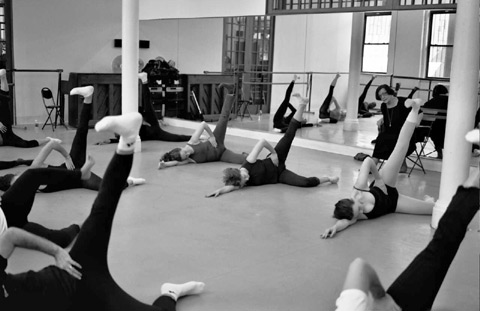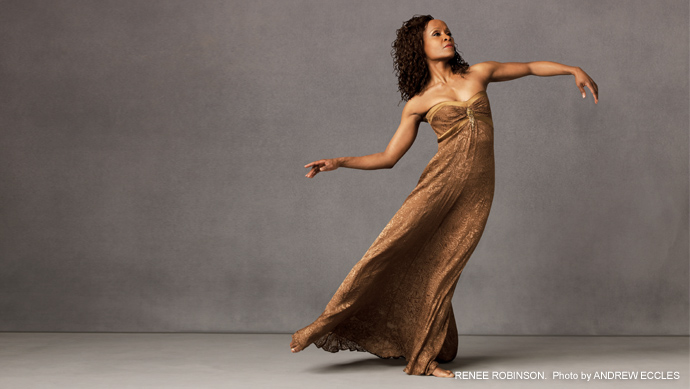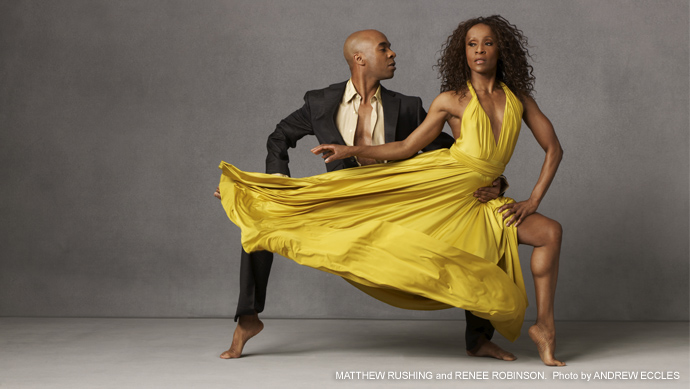Us dancers are so visual, so it always nice to come across fantastic dance photography. Check out this eye candy I found, dancers posing in everyday situations, by photographer Jordan Matters. "Dancers Among Us" So creative!
http://www.stumbleupon.com/su/2BSWjP/www.myphotographytutorials.com/gallery/photos-of-professional-dancers-in-everyday-situations
Wednesday, November 30, 2011
Thursday, October 13, 2011
Hyperextended? What to do...
I have several students in my classes who are naturally hyperextended. It's such a beautiful aesthetic in ballet, but man is it bad on the knees! They are constantly dealing with knee pain and swelling, and one of them asked if I knew how to fix it. I told her I thought she wasn't supposed to straighten her knees all the way, which for a hyperextended person means locking your knees, but I wasn't 100% sure. So, I consulted the experts, a.k.a. Dance Magazine. This article thankfully confirms what I thought and told my student, and it describes what is exactly going on in a hyperextended knee.
I also learned that hyperextension is a kind of made up condition in dance. In the medical field, it's used to describe an injury, not a natural condition (see: Mayo Clinic). That isn't addressed in the Dance Magazine article, but it at leasts helps us dancers and teachers know how to fix it! Check it out: http://www.dance-teacher.com/content/hyperextension-and-bowleggedness.
Labels:
Dance Magazine,
Hyperextension,
knees,
pain
Long break...
Hello to all my loyal readers! I have taken a very long break, and I apologize for dropping off the face of the earth! I got in a bad car accident while eight months pregnant, and from there, blogging was my last priority. Now things are back on track and I'm doing great, just still very busy as the SAH mom of a toddler and baby, while teaching dance at night. Thanks for sticking around and I hope to continue to offer you helpful tips and dance advice!
~ Sara
~ Sara
Monday, February 7, 2011
Interview with Zena Rommett
Interview with Zena Rommett, creator of the Rommett Floor-Barre Technique
By Rachel Rabkin
March 20, 2003
Recently, after taking one of Zena Rommett's classes at Steps on Broadway and 74th Street, I sat down with her, her daughter Camille Rommett, and a long-time student of the Floor-Barre Technique. There at the studio's sunny second-floor café, the three of us talked about Rommett's background, philosophies, and her revolutionary teachings.
Rachel Rabkin: When did you start taking ballet?
Zena Rommett: I started dancing when I was 16.
RR: When did you feel that there was a need for your Floor-Barre technique, which focuses on aligning, strengthening, and lengthening dancers' bodies?
ZR: I had dance scholarships and had some of the best teachers but I felt I never got the basics. I had fantastic facilities and was put into professional classes right away, but I know what it is to go to class and not know what it's all about. I felt the need to slow things down and refine ballet technique. That was about 45 years ago.
RR: Do you think that the basics are still getting lost in dance classrooms today?
ZR: I don't approve of what's going on in teaching today. I see very little quality except from some of the older master teachers. There is no artistry. I see seven- and eight-year-old children in pointe shoes with injuries, and they have no basics. My work, on the other hand, strengthens the joints and places them correctly so they can avoid injuries and train for many more years. The basics, though, in general, are lost with everything-not just dance-with music and art too. For the most part, the master teachers are gone. Everyone is teaching these days, and everything gets washed down. There is no longer the discipline to repeat basic steps over and over again. Everything has deteriorated. That's why I want to make an impact on teaching.
RR: Has your Floor-Barre Technique changed and grown over the years?
ZR: I develop it all the time. Now I am gearing it more toward therapy-toward injury prevention and rehabilitation. The technique is also getting more specific. Constantly refining the alignment corrects so many problems that dancers have.
RR: What is the most satisfying part of teaching your technique?
ZR: It is most satisfying when the bodies I work with become really beautiful bodies-like sculptures. It is also most satisfying to see how the student feels.
RR: How quickly can a student expect to see and feel results?
ZR: Right away.
RR: What is your biggest struggle in getting the word out about your teachings and your foundation?
ZR: The biggest struggle is lack of money. We've never had any marketing or advertising. It has all been word of mouth. I've been to Taiwan, Germany, Russia, Italy, California, and all over teaching. But unlike Pilates, which has wonderful marketing and is involved in selling machines, people just began coming to my classes. When I used to teach on West 3rd Street, some people would say, 'That woman is far out.' But people kept coming-dancers like Judy Jamison, Larry Rhodes, Lar Lubovitch, Melissa Hayden, and students of Balanchine and Martha Graham.
RR: Speaking of Pilates. I heard that Pilates has been influenced by your technique. Have you picked up anything from Pilates?
ZR: Absolutely not. I am a purist.
RR: I hear that you are working on a book. When will that be available?
ZR: Yes. I have been working on a book with a writer for about three years. It should come out soon. My philosophy has become clearer over the years and I want the book to reflect that.
RR: When did you start selling Floor-Barre videos? Have they been well received?
ZR: In 1991 we put out our first video. Now we have over three videos and they sell. We don't even advertise them and they sell. Next year we are coming out with a video for non-dancers-for business people, athletes, and senior citizens.
RR: How many teachers are now certified to teach your technique?
ZR: About 60 teachers throughout the world.
[Teachers who would like to apply for certification in Floor-Barre Technique can do so now. A certification course taught by Zena will take place on April 15th-18th and August 14th-17th 2003 at the New York Open Center. For more information call 212-633-0352, e-mail floorbarre@hotmail.com, or log on to www.floor-barre.org.]
RR: What would you like to see happen with your technique in the future? What is your dream?
ZR: It would be wonderful to see the technique being taught everywhere-in schools and studios everywhere. I'd also like to see my technique being used in the world of sports. I have the highest admiration for Tiger Woods. Now, he has placement. I would like to help him with his knee injury. I'd like to work with ice skaters and gymnasts also so they can apply the teachings I've refined to their bodies. We've influenced the ballet world and the modern dance world. We'd like to take it a step further and make our mark on sports.
Zena wasn't the only ones talking. Her student and her daughter, Camille, were also forthcoming with praise for Zena.
Student: I don't know if I've ever met a teacher like Zena, who cares as much about what she's teaching. She's focused on her work and carrying it through. She is a teacher's teacher. The more you take her classes, the easier dancing becomes. Dancing is very simple if you follow what Zena says because your center becomes solid.
I think everyone should take Floor-Barre, from senior citizens to children. I don't even dance anymore but I take Zena's classes for overall well being and for injury prevention. I look better, I feel better. My body is healthy, and strong.
Camille: Zena is an original. She is one of a kind, and she has a fantastic eye for correcting alignment. I am a constant witness to all of the positive feedback she gets wherever she goes. She truly has an unexplained gift to see and heal the body. Joffrey used to say that Zena could see through a brick wall.
My mission with the Zena Rommett Dance (Association) Foundation is to document the work and preserve the technique in its purity.
Zena Rommett's Floor Barre Technique
In the previous post, I wrote about Alvin Ailey dancer, Renee Robinson, who swears by Zena Rommett's Floor Barre Technique, and wanted to delve into more detail about it. Zena, a ballerina who also danced on Broadway, started this technique in 1968, and it is still going strong today.
According to the website, "By utilizing the floor, and without the stress of gravity associated with ‘standing’ at the ballet barre, dancers learn to align their bodies, lengthen their muscles, strengthen their joints, and fine-tune their movements. Floor-Barre® makes it possible for dancers to execute classical ballet movements with principles of alignment which are anatomically correct, and by using only the appropriate muscles...Over the past 50 years, Zena Rommett has earned the respect of the medical profession as a pioneer in injury prevention and rehabilitation."
Anyone can get certified, and the next certification seminar will take place this August in NYC. For more information, visit http://www.floor-barre.org/Floor-Barre/CERTIFICATION.html
This video is a great overview of what the technique is all about.
Here is an excerpt from one of the DVD's, which can be purchased on the website.
Sunday, February 6, 2011
How to Take Care of Your Dancing Body
Renee Robinson, who in her 40s is still dancing and performing with Alvin Ailey, keeps her body in top condition by using Zena Rommett's Floor Barre technique, Gyrotonics, juicing, and eating a very healthy diet of whole foods, fruits and vegetables. In this article from Dance Magazine, Technique My Way, she delves into her daily routine, which can help dancers of all ages learn how to take care of their bodies so they last for an entire career, and not just a rehearsal.
In the article, Renee says she enjoys Zena Rommet's Floor Barre because "lying down relieves so much pressure and helps you avoid gripping while you work correct alignment." For her, Pilates made her body tighter, although she suggests that dancers try different exercise methods to find the one that works for them. She also recommends regular cardio exercising, which helps especially for "stamina-intensive" ballets. And there again, she has created own regimen, adjusting for her age and what her body at 40 can handle.
Renee places a lot of value upon really being in-tune with your body, saying that young dancers have a tendency to not listen to their bodies and take the time to reflect. Lastly, she says there is nothing more important than a good nights' sleep!
Saturday, February 5, 2011
Communication Boundaries with Students
As a teacher, I've found it difficult to know where to draw the boundaries of communication outside the studio with my dance students, especially now with the popularity of Facebook and texting. For me at least, the only time I need or want to communicate with my students is when it's dance-related - to send them an article, pump them up for competitions, or send a reminder. Of course, there are those who will abuse the boundary and communicate inappropriately with their students, so as a studio owner, it is prudent to set boundaries for your teachers and students.
In an article from Dance Teacher Magazine entitled "Business: Setting Boundaries," one of the studios recommends writing up a contract that both your teachers, students and parents sign so the boundaries are very clear. That same studio "forbids teachers from 'friending' students on Facebook," but created a Facebook page for the studio where the teachers and students could communicate online.
Diane Kelley's studio in West Boylston, MA has a code of conduct which "states that contact with students (social networking, cell, online chat or phone calls) is prohibited outside of class without studio consent...with some flexibility allowed."
In an article from Dance Teacher Magazine entitled "Business: Setting Boundaries," one of the studios recommends writing up a contract that both your teachers, students and parents sign so the boundaries are very clear. That same studio "forbids teachers from 'friending' students on Facebook," but created a Facebook page for the studio where the teachers and students could communicate online.
Diane Kelley's studio in West Boylston, MA has a code of conduct which "states that contact with students (social networking, cell, online chat or phone calls) is prohibited outside of class without studio consent...with some flexibility allowed."
Yet another studio in Orem, UT, which has alumnus like Julianne Hough and Chelsie Hightower, has a very lenient policy on communication with students and creating such rules is a "foreign concept."
For more details, check out the article here: Business: Setting Boundaries.
For more details, check out the article here: Business: Setting Boundaries.
Subscribe to:
Posts (Atom)






